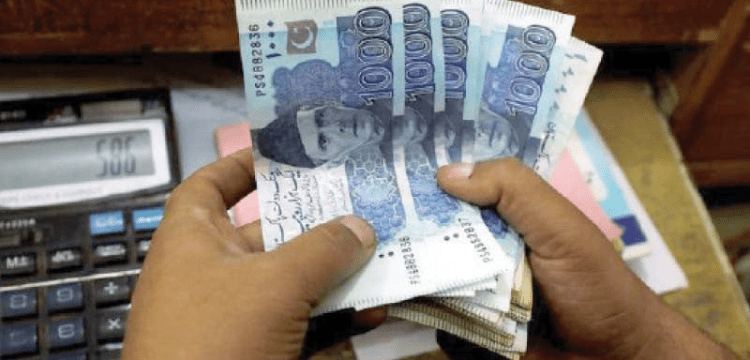[vc_row][vc_column][vc_column_text dp_text_size=”size-4″]KARACHI: Following the open market’s lead, the Pakistani rupee continued to decline in the interbank market on Thursday, falling 0.08%, or Rs0.22, to a new one-week low of Rs285.62 per US dollar.
The rupee was once again under pressure after Wednesday’s open market decline of over Rs7 to around Rs300/$, brought on by a decline in dollar inflows and a deteriorating political situation.
However, on Thursday, the open market had a slight recovery of around Re1 to Rs299/$.
In the past, the gap between the two markets has often ranged between Re1 and Rs3, hence the increase in spread to Rs13 is exceptional.
Also Read: Jazz takes top spot in OpenSignal’s new coverage experience report
People’s hesitation to sell their dollar holdings in the prospect of additional rupee depreciation led to the sharp currency decline on the open market.
On the other side, once the Hajj season began, there was a minor rise in demand for foreign currency. Before the pilgrimage, people typically purchase US dollars and Saudi riyals.
The rupee ended Wednesday’s interbank market trading at Rs285.40 to the dollar, according to data from the State Bank of Pakistan (SBP). Over the previous two days, it decreased 0.23%, or Rs0.66, overall.
At Rs299/$ last week, the exchange rate reached an all-time low.
Market participants remarked that a dramatic 42 times month-over-month decrease in the current account surplus to $18 million in April indicated that the interbank market’s inflow of foreign currency had decreased.
The surplus decreased in April as a result of falling worker remittances and export revenues, while service imports rose.
However, experts believed that with the sustained government restrictions on imports, the current account balance would post a little surplus or break even.
Pakistan’s reserves of foreign currency, which are currently at a critical low of $4.4 billion, are insufficient for imports. In the event that the International Monetary Fund (IMF) loan programme continues to falter, this has increased the likelihood of a debt default.[/vc_column_text][/vc_column][/vc_row]











